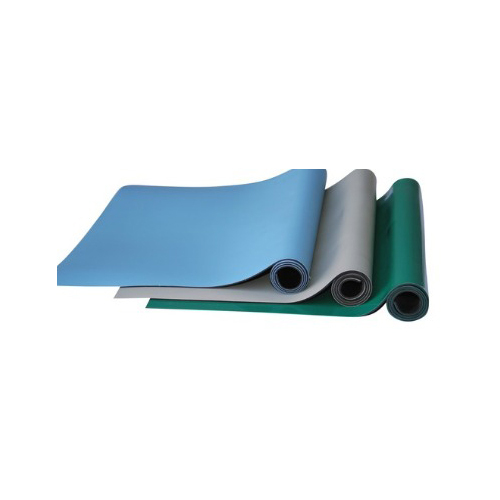Call us now : 08071930583
Esd Mat Roll
55.0 INR/Piece
Product Details:
- Product Type mat
- Material PVC Vinyl
- Application esd vinyl mat for cleanroom rooms , lab and other
- Surface Resistance 10^6 X10^9
- Usage esd vinyl mat for cleanroom rooms , lab and other
- Size 2 mtr x 15 mtr
- Dimension (L*W*H) Meter (m)
- Click to View more
X
Esd Mat Roll Price And Quantity
- 325 Piece
- 55.0 INR/Piece
Esd Mat Roll Product Specifications
- esd vinyl mat for cleanroom rooms , lab and other
- 10^6 X10^9
- PVC Vinyl
- Meter (m)
- 2 mtr x 15 mtr
- esd vinyl mat for cleanroom rooms , lab and other
- mat
- blue
Esd Mat Roll Trade Information
- Others
- 1000 Piece Per Week
- 4 Days
- No
- Free samples are available
- safe packaging
- Asia
- All India
Product Description
- Material: ESD mats are typically made from synthetic rubber or vinyl, which are conductive or dissipative materials. This allows them to safely channel static electricity away from sensitive equipment.
- Construction: These mats often have a layered construction, with a conductive layer at the bottom to ensure that any static charge is grounded effectively.
- Surface Texture: The surface may be smooth or textured, providing grip while allowing easy movement of tools or components.
- Color: Commonly available in various colors, such as black, blue, or green, with a consistent appearance that fits in professional environments.
- Sizes: ESD mats come in various sizes to accommodate different workspaces, from small workbenches to large assembly lines.
Benefits:
- Protection: Prevents damage to sensitive electronic components caused by static discharge, which can lead to failure or malfunction.
- Grounding: ESD mats are typically used in conjunction with grounding cords to ensure that both the mat and the person using it are grounded.
- Versatility: Suitable for use in electronics manufacturing, repair stations, labs, and any environment where static-sensitive components are handled.
- Durability: Designed to withstand wear and tear, making them a long-lasting solution for static control.
Usage:
To use an ESD mat effectively, it should be placed on a stable work surface, and users should wear grounding wrist straps to ensure a complete ESD-safe environment.
Overall, ESD mats are essential tools in maintaining the integrity and functionality of electronic devices and components.
4o mini
Tell us about your requirement

Price:
Quantity
Select Unit
- 50
- 100
- 200
- 250
- 500
- 1000+
Additional detail
Mobile number
Email






 Send Inquiry
Send Inquiry Send SMS
Send SMS
